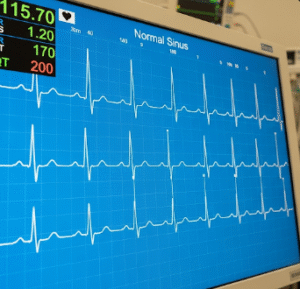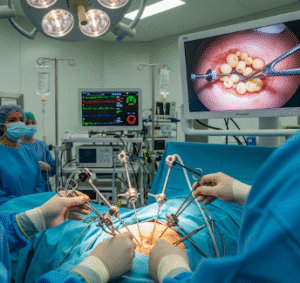What It Is
Carpal tunnel release is a surgical procedure used to treat carpal tunnel syndrome, a condition caused by compression of the median nerve in the wrist. This nerve passes through a narrow passageway called the carpal tunnel, and when the tunnel becomes too tight, patients experience pain, numbness, tingling, and weakness in the hand.
The surgery relieves pressure by cutting the transverse carpal ligament, enlarging the tunnel, and restoring normal nerve function. In Korea, carpal tunnel release is performed by plastic, orthopedic, and hand surgeons, often using minimally invasive or endoscopic techniques.
Why It’s Done
Carpal tunnel release is recommended when:
- Symptoms (numbness, tingling, pain, weakness) persist despite non-surgical treatments
- Night pain and hand weakness interfere with daily life
- There is evidence of nerve damage or muscle atrophy in the hand
- Conservative therapies (splints, medications, steroid injections) no longer provide relief
The goal is to restore hand function, relieve pain, and prevent long-term nerve damage.
Alternatives
Before surgery, patients may try:
- Wrist splints: Especially at night to relieve pressure on the nerve
- Corticosteroid injections: Temporary relief of inflammation
- Anti-inflammatory medications: To reduce swelling
- Activity modification & physiotherapy: Adjusting wrist movements and posture
If symptoms are severe or nerve damage is present, carpal tunnel release remains the definitive treatment.
Preparation
Preparation for surgery in Korea includes:
- Consultation: With a hand surgeon and nerve evaluation (physical exam, nerve conduction studies, electromyography)
- Medical clearance: Blood tests and anesthesia review
- Lifestyle adjustments: Avoiding smoking and alcohol to promote healing
- Medication review: Temporary discontinuation of blood thinners or certain supplements
- Post-surgery planning: Arranging short-term rest and light duty for hand use
How It’s Done
Carpal tunnel release can be performed in two main ways, both under local anesthesia with sedation or regional block:
Open surgery
- A small incision is made in the palm
- The surgeon cuts the transverse carpal ligament to release pressure
- The incision is then closed with fine sutures
Endoscopic surgery (minimally invasive)
- One or two small incisions are made in the wrist or palm
- A tiny camera (endoscope) guides the surgeon to cut the ligament
- This approach often allows quicker recovery and smaller scars
The procedure typically takes 20–40 minutes, and patients usually go home the same day.
Recovery
Recovery after carpal tunnel release is relatively quick:
- First days: Mild swelling, soreness, and stiffness are common. A soft dressing is applied to protect the wrist
- Return to activities: Light hand use within a few days; stitches are removed in 10–14 days
- Physiotherapy: Gentle exercises start early to prevent stiffness and improve motion
- Full recovery: Most patients regain function in 4–6 weeks, though grip strength may take several months to fully return
- Return to work: Office work in 1–2 weeks; heavy labor may require 6–8 weeks
Possible Complications
Although generally safe, risks include:
- Infection or bleeding
- Nerve or vessel injury
- Scar tenderness or stiffness
- Incomplete relief of symptoms (especially in advanced cases)
- Rare recurrence of carpal tunnel syndrome
Treatment Options in Korea
Diagnosis
- Clinical examination of hand and wrist
- Nerve conduction studies and electromyography (EMG) for confirmation
Medical Treatments
- Splints, physiotherapy, and corticosteroid injections for mild cases
- Medications for pain and inflammation control
Surgical or Advanced Therapies
- Open carpal tunnel release: Standard, reliable approach
- Endoscopic release: Minimally invasive, faster recovery, smaller scars
- Revision surgery: For rare cases of recurrence or persistent symptoms
Rehabilitation and Support
- Hand therapy programs to restore mobility and strength
- Scar care with silicone gels or laser therapy if needed
- International patient support with interpreters, hospital guidance, and follow-up services













